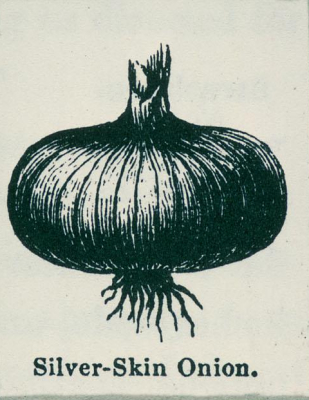
Vegetables grown in early American gardens
 The
earliest American gardens were much less diverse than vegetable gardens
today. Seed companies didn't come into existance in the United
States until after the Revolutionary War, so people saved their own
seeds and tended to grow the same varieties year after year.
Gardeners would trade seeds with their neighbors, but since there was
very little seed traffic between the United States and Europe at the
time, neighbors weren't likely to have anything extremely different or
innovative.
The
earliest American gardens were much less diverse than vegetable gardens
today. Seed companies didn't come into existance in the United
States until after the Revolutionary War, so people saved their own
seeds and tended to grow the same varieties year after year.
Gardeners would trade seeds with their neighbors, but since there was
very little seed traffic between the United States and Europe at the
time, neighbors weren't likely to have anything extremely different or
innovative.
So what did early
American colonists grow? Early New England Gardens
lists asparagus, beans, beets, cabbage, carrots, cucumbers, kale,
lettuce, corn, melons, onions, parsnips, peas, peppers, potatoes,
pumpkins, radishes, rutabaga, squashes, turnips.
Many of the vegetables
that we now consider common were missing at the
time, but not because they were unknown in Europe. Instead,
vegetables like tomatoes, broccoli, and garlic were eaten only by the
very poor or by certain ethnic groups, entering mainstream American
culinary tradition in the early nineteenth century (tomatoes) and the
early twentieth century (broccoli and garlic.) I can't imagine
life without tomatoes and garlic!
| This post is part of our Early New England Gardens lunchtime series.
Read all of the entries: |
Want more in-depth information? Browse through our books.
Or explore more posts by date or by subject.
About us: Anna Hess and Mark Hamilton spent over a decade living self-sufficiently in the mountains of Virginia before moving north to start over from scratch in the foothills of Ohio. They've experimented with permaculture, no-till gardening, trailersteading, home-based microbusinesses and much more, writing about their adventures in both blogs and books.
Want to be notified when new comments are posted on this page? Click on the RSS button after you add a comment to subscribe to the comment feed, or simply check the box beside "email replies to me" while writing your comment.
- Remove comment

- Remove comment
